PPT-Narnia for Adults: Introduction
Author : cheryl-pisano | Published Date : 2018-11-05
to the Chronicles of Narnia Winter Quest 2017 Concordia Lutheran Seminary Edmonton Alberta Drawings by Pauline Baynes The Lion lions amp the last lion It all
Presentation Embed Code
Download Presentation
Download Presentation The PPT/PDF document "Narnia for Adults: Introduction" is the property of its rightful owner. Permission is granted to download and print the materials on this website for personal, non-commercial use only, and to display it on your personal computer provided you do not modify the materials and that you retain all copyright notices contained in the materials. By downloading content from our website, you accept the terms of this agreement.
Narnia for Adults: Introduction: Transcript
to the Chronicles of Narnia Winter Quest 2017 Concordia Lutheran Seminary Edmonton Alberta Drawings by Pauline Baynes The Lion lions amp the last lion It all Began with a Picture. Penrith Farms is a working farm located in Eastern Washington for young and emerging adults to learn life skills and experience emotional growth. Our focus is to engage troubled young adults and to help them transition into adulthood.
Penrith Farms is a working farm located in Eastern Washington for young and emerging adults to learn life skills and experience emotional growth. Our focus is to engage troubled young adults and to help them transition into adulthood.
Shawn M Lang, Director of Public Policy. CT AIDS Resource Coalition. HIV/AIDS and Older Adults. What are HIV and AIDS?. H. uman . I. mmunodeficiency . V. irus. A. cquired. . I. mmunodeficiency . D. By C.S. Lewis. PowerPoint . by . ______. Chapter 1:The Wrong Door. Digory is a curious boy who lives in a row house with his aunt and uncle because his dad is away in India and his mom is terribly sick, and is about to die. . Mrs. Temple’s . Reading and Language Arts. Chapter . 1 . Lucy . Looks into the Wardrobe. Air raids- . attack . by aircraft, especially against a non- military target such as a city. Row-. argument. the Chronicles of Narnia. Covenant Presbyterian Church,. January-February 2016. The Lion, lions, & the last lion. “It all Began with a Picture…”. Of Other Worlds. , p. 42. The Editor has asked me to tell you how I came to write . The Fiction of C. S. Lewis . Clive Staples Lewis (1898-1963). Reepicheep. “. When I was ten, I read fairy stories in secret and would have been ashamed if I had been found doing so. Now that I am fifty I read them openly. When I became a man I put away childish things, including the fear of childishness and the desire to be very grown up.”. INSET. Creative Barnabas RE Day . (Reception to Year 6). … The workshop leader really engaged. the children throughout the assembly. . This was a lively and appetite-whetting . introduction that paved the way into . Book Series vs. Book Series. Competitors. Harry Potter. Twilight. Hunger Games. Percy Jackson. Narnia. Inkheart. A Series of Unfortunate Events. Matched. Criteria. Criteria One: How much experience does this author have? Has he/she written other things before this series?. An Examination of Reminiscence Functions in a Sample of Older Black Adults. Juliette Shellman, Ph.D., APHN-BC. Mukumbi Brown, BSN, RN, Deborah Stone, MS, RN. & Karen Addison, LCSW. University of Massachusetts Lowell. Figure 1. Recommended immunization schedule. Figure 2. Recommended immunization schedule for adults . Page 2 of footnotes.. Footnotes. Table of contraindications and precautions. established in 1936 in honor of Andrew Carnegie, Scottish philanthropist. Cover Photos, Modern and Original. “The Last Battle”. Not only the title of the last . Narnian. chronicle. The title of the last chapter in the story of King Arthur, i.e., . Batter Up! Advanced ELL Final Exam Review The Rules Coin toss to decide which team is first “at bat.” If you answer correctly, you advance to the next base. If are wrong, it’s a strike and your [EBOOK] Learning Cursive in Narnia: Cursive Handwriting Practice (Learning with Literature)
http://skymetrix.xyz/?book=1072561085
Download Document
Here is the link to download the presentation.
"Narnia for Adults: Introduction"The content belongs to its owner. You may download and print it for personal use, without modification, and keep all copyright notices. By downloading, you agree to these terms.
Related Documents

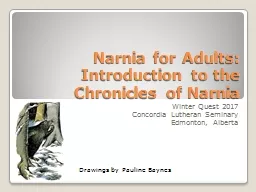
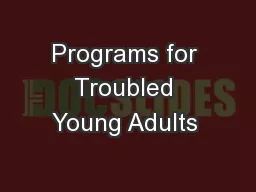


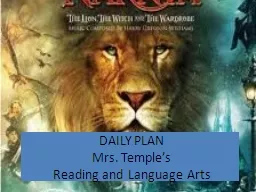
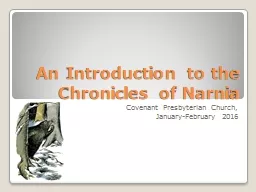
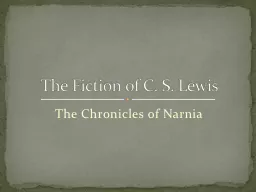

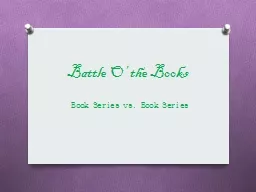


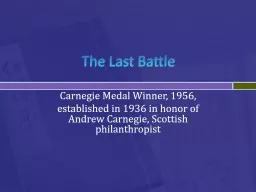

![[EBOOK] Learning Cursive in Narnia: Cursive Handwriting Practice (Learning with Literature)](https://thumbs.docslides.com/1008478/ebook-learning-cursive-in-narnia-cursive-handwriting-practice-learning-with-literature.jpg)